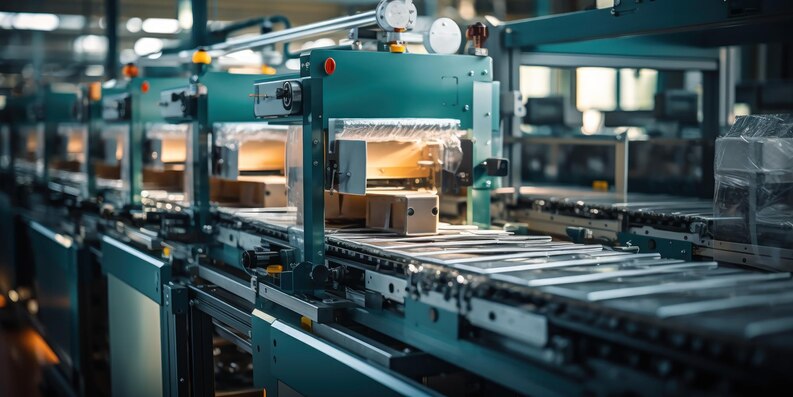In today’s competitive industrial landscape, accuracy and speed are no longer advantages they are expectations. As logistics and manufacturing systems evolve, machine vision has become a critical technology enabling automation to reach new levels of intelligence and efficiency.
Machine vision equips machines with the ability to see, process, and make decisions based on visual data. In logistics, it’s the technology behind real-time object tracking, barcode scanning, package inspection, and autonomous navigation. As supply chains grow more complex and time-sensitive, machine vision ensures the right goods are handled correctly, efficiently, and safely.
What Is Machine Vision?
Machine vision is the use of cameras, sensors, and image-processing software to capture visual information and interpret it for industrial tasks. Unlike simple photography, machine vision systems are designed for high-speed, high-accuracy analysis, capable of operating in harsh or dynamic environments.
The core idea is to enable machines such as robots, conveyors, or sorting systems to recognize shapes, patterns, sizes, or flaws and respond without human intervention. These systems are especially powerful when integrated with robotic automation, providing the eyes that guide movement, placement, and inspection.
While often associated with manufacturing, machine vision is now essential in logistics centers, where it ensures precision in a fast-paced, high-volume setting. It’s a key enabler of smart warehouses and autonomous material handling systems.
Machine Vision Process
The machine vision process follows a multi-step workflow:
- Image Acquisition
High-resolution cameras or optical sensors capture images or video of the target object. This step may involve multiple angles, lighting conditions, or infrared imaging, depending on the application. - Image Preprocessing
The raw image is enhanced to improve clarity, remove noise, and highlight relevant features. Filters may be applied to adjust brightness, contrast, or edges. - Feature Extraction
Algorithms analyze specific image details like barcodes, object dimensions, or product alignment. Machine learning can also be used to recognize complex patterns. - Decision Making
The system compares extracted features against programmed criteria and makes a real-time decision (e.g., accept/reject, redirect, scan, or track the item). - Actuation
The result triggers a mechanical or digital action such as stopping a conveyor, adjusting a robot’s path, or updating inventory records.
In logistics, this process takes place in milliseconds, allowing thousands of packages per hour to be scanned, verified, and routed accurately.
Machine Vision in Manufacturing
In manufacturing, machine vision is widely used for quality control, measurement, and guidance. From detecting micro-defects in electronic components to aligning car doors in assembly lines, vision systems ensure products meet exact specifications.
Machine vision enhances production in several ways:
- Defect Detection: Identifies flaws such as cracks, discoloration, or missing parts.
- Dimensional Accuracy: Ensures all components fit precisely before assembly.
- Part Identification: Reads serial numbers, barcodes, or QR codes.
- Robot Guidance: Helps robotic arms position tools or assemble parts with sub-millimeter accuracy.
Manufacturers using vision systems report up to 90% reduction in inspection errors, improved throughput, and lower labor costs. These systems also generate data that feeds into predictive maintenance and quality analysis, contributing to smart factory initiatives.
Machine Vision in Logistics
The logistics sector is increasingly adopting machine vision to handle the rising demands of e-commerce, fulfillment, and real-time inventory management. As parcel volumes skyrocket, companies are turning to vision systems for fast, reliable automation.
Key applications include:
- Barcode and Label Reading: High-speed scanners identify packages in motion.
- Package Dimensioning: 3D vision systems measure size and shape for optimized storage and shipping.
- Sorting and Routing: Cameras guide automated systems to direct packages to the correct destination.
- Damage Detection: Vision checks for torn labels, dented boxes, or incorrect packaging.
- Autonomous Navigation: Robots and AMRs use machine vision to detect obstacles, follow paths, and operate safely in shared spaces.
Logistics providers benefit from faster processing times, error reduction, and enhanced visibility across the supply chain. Machine vision also supports contactless operations, which became vital during the COVID-19 pandemic and remain valuable in high-volume environments.
Conclusion
Machine vision has revolutionized how logistics and manufacturing industries operate. It brings the power of sight to automation transforming how objects are tracked, inspected, sorted, and handled.
As global supply chains demand greater precision and adaptability, machine vision systems will become even more advanced, integrating with AI, robotics, and cloud platforms to drive the future of smart logistics. For companies aiming to boost efficiency, reduce errors, and future-proof their operations, investing in machine vision is no longer optional—it’s essential.


